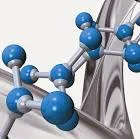reflot the thread to link a news that has come out today: Link ... -Norma-iso
A study demonstrates that the results of blood glucose of Contour XT exceed the precision standards of the ISO Standard
Barcelona (12/15/2011) - Drafting
• The study was presented at the IDF World Congress of Diabetes that has been held in Dubai
• The results obtained by patients and health professionals were almost identical
A new study presented at the World Diabetes Congress (WDC) of the International Diabetes Federation, which has been held in Dubai, demonstrates that the results of the new system for blood glucose analysis of Bayer Contour XT and the glucose strips of glucoseIn Blood Contour Next exceed not only the precision standards of ISO 15197: 2003, but also the strictest criteria expected of the new standard for early 2012, since the results obtained by both patients and health professionals werealmost identical.The study demonstrates the excellent precision and accuracy of the system even when patients who have not received training are used.
The reactive glucose strips in Contour Next belong to a new generation of blood glucose reactive strips that use the GDH-Fad enzyme in combination with a bayer patented mediator to measure glucose in capillary blood.
The study presented at the WDC evaluated the accuracy of the Contour XT meter in the hands of its potential users: people with diabetes and health professionals.98.9 percent of the results of the capillary blood of people with diabetes were within the +/- 15 percent interval and 99.5 percent of the results of capillary blood glucose obtained by professionalsSanitary were in an interval of +/- 15 mg/dl.
Blood glucose analyzes were duplicated with the meter using a capillary sample of two punctures on the finger (superficial and deep), as well as a venous sample.All the results of the meter analysis were compared to the laboratory results with the YSI analyzer.
The precision was evaluated as the percentage of results that were within the criteria accepted by ISO 15197: 2003 and based on the most strict precision criteria expected of the new standard.
Exceeds the criteria of ISO 15917: 2003
According to ISO 15917: 2003, the criterion of compliance with this standard is that 95 percent of the results obtained with the glucose meter are in a range of +-15 mg/dl of difference with respect to the laboratory reference forglucose values below 75 mg/dl, and within 20 percent for glucose values equal to or greater than 75 mg/dl.
The study recruited 93 people with an average age of 33, of which 78 percent had type 1 diabetes, and 22 percent, type 2 diabetes. The results with the capillary samples of the deep puncture were similar to theOf superficial punctures, whether the Aceur XT analysis is made by people with diabetes or health professionals.
The results were calculated separately for glucose & lt values; 100 and ≥100 mg/dl, and similar results were observed when the calculations were done for glucose & lt values; 75 and ≥75 mg/d.The average hematocrit was 44 percent with values between 32 and 52 percent.No serious non -anticipated side effects related to themeter.
New Generation Precision
To meet high precision standards and individual requirements of diabetes patients, Bayer has developed the glucose analysis of glucose blood count XT and reactive blood glucose strips in Contour Next blood.The new chemistry of the strip incorporates a mediator patented by Bayer that reduces background noise to identify blood glucose, especially at low levels, where it is more important.
The strips tolerate multitude of different storage situations maintaining precise results, and minimize signal interference from common substance substances (such as paracetamol and vitamin C) and hematocrit.The meter also has a patented algorithm that makes multiple pulse measurements, which provides specific information points for the meter to evaluate them, facilitating a unique calculation of compensated glucose concentration.
Bayer presented the meter in September at the Annual Meeting of the European Association for the Study of Diabetes, and is now available in Spain, Portugal and Italy;In the rest of the countries it will be launched soon.




